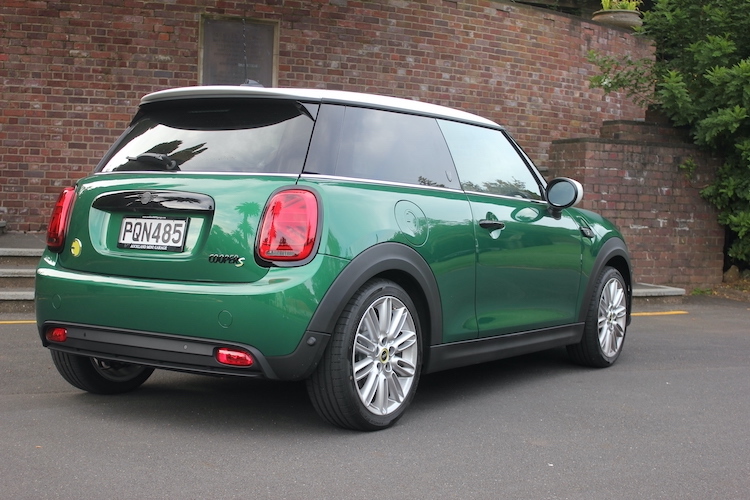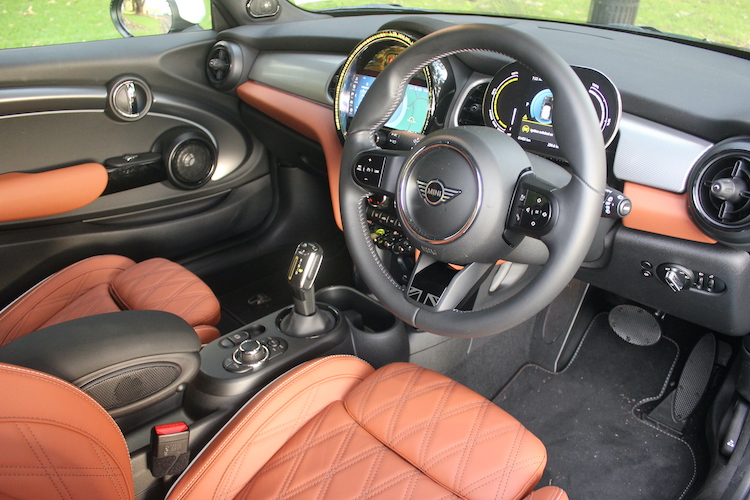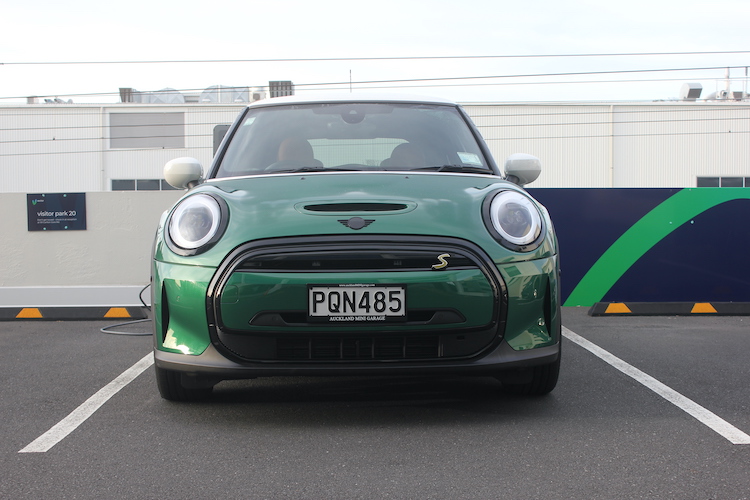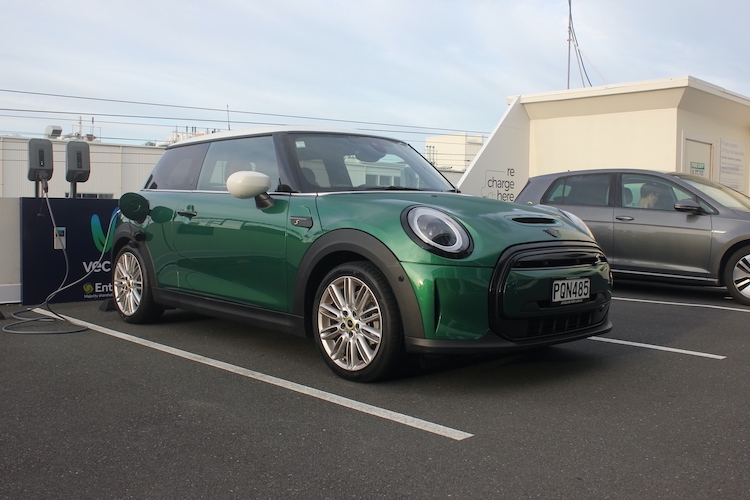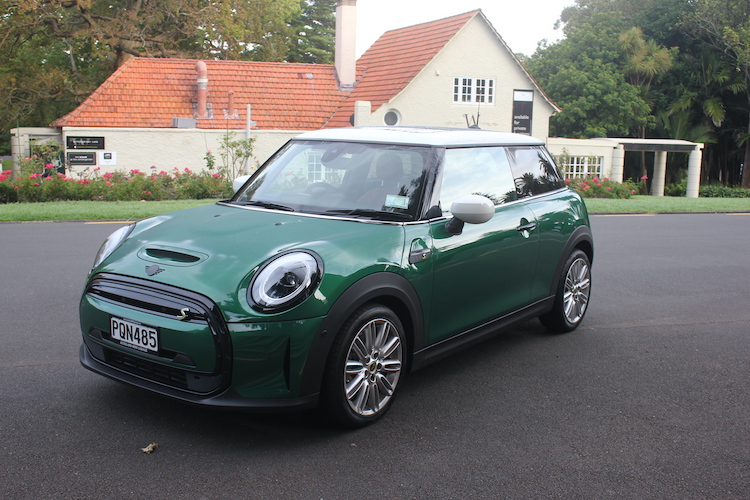
When Mini launched a battery electric version of its Cooper S three-door hatch three years ago, the car stood alone in the New Zealand market as the sole premium plug-in offering priced from $59,990.
The Mini Cooper S Electric offered almost as much performance and certainly as much of the fun-to-drive dynamics of the petrol Cooper S hatch.
And it certainly turned a few heads with its badges, trim, mirror caps and asymmetric Power Spoke alloy wheels highlighted in bright Energetic Yellow.
Fast forward to 2023 and the refreshed and now 70-grand, Mini Cooper S Electric, arrives to face stiff competition from the Peugeot e-208 GT (from $59,990), the Mazda MX-30 BEV (from $68,590), and the new Fiat 500e (from $59,990).
It also must contend with a bunch of Chinese mass market value challengers, the BYD Atto 3 (from $58,990), the GWM Ora (from $49,990), and the Tesla Model 3 (from $65,900).
It’s obvious that many of these electric competitors offer greater space, range, and better value than the Mini, but they’re also not targeting the brand’s very niche market that desires style and exclusivity irrespective of the pricetag.
The British built Mini offers buyers the brand values and cachet of its heritage, in addition to low running costs, and rock-solid residuals that should see it lease up competitively on a 36- or 4- month term.
The numbers
Acceleration from zero to 100km/h takes 7.3 seconds in the 2023 Cooper S Electric, but unfortunately the update hasn’t seen an improvement in its range.
Mini quotes a WLTP figure of 233km but the daily reality is closer to a range of 160 to 170km, depending on how often the air conditioning is used and the way the car is driven.
There’s a very simple explanation for this relatively low battery range. BMW repackaged the BEV technology from the now discontinued i3 S into the platform of the Cooper S hatch which was designed for internal combustion engines.
Therefore, there isn’t enough space available for a larger battery pack than the existing 33kWh set-up.
A brand new Mini Electric hatch is coming later in 2023 with a platform designed solely for electric drive and one would assume there’ll be more range on offer and more power options.
Outside and in
In the 2023 update the Cooper S Electric has lost most of the previous car’s bright Energetic Yellow details save for the S badge on the front grille and the circular E badge on the tailgate.
We like the less overtly electric stance of the new model and think it will appeal to a broader audience.
Sadly, the new and more aerodynamic lower front bumper has seen the deletion of the front foglights and the grille is now larger, with a black frame, bisected by a piece of body-coloured trim.
The Mini Yours package for the Cooper S Electric provides customers with 26 exterior colour options, five different 17-inch alloy wheel choices, and three different interior colourways.
Our test car came finished in British Racing Green with Aspen White mirror caps and roof, and Tentacle Spoke Silver wheels.
The interior was finished in Chester Malt Brown leather upholstery and lower dashboard which was rather striking but brought some warmth to the compact dimensions.
The Mini Yours specification also includes a panoramic glass sunroof, sun protection glazing, sports front seats, a Union Jack detail on the steering wheel, anthracite headliner, a head-up display, and embroidered floormats.
We loved the retro toggle switches and the oval digital instrument cluster directly ahead of the driver.
But the big circular central cluster which pays homage to the original Mini is now beginning to date, and hopefully won’t continue on the next generation.
Apple Car Play is standard but Android Auto phone projection isn’t available on this car, and hopefully that too will be rectified in future cars.
Safety
The Mini Cooper from January 2023 onwards is unrated by ANCAP Safety. However, this current model is the third refresh of the F56 series which launched in 2014 and was given a four-star crash rating by Euro NCAP that year.
The car tested by Euro NCAP was a base model 1.5-litre petrol Cooper hatch in right-hand drive configuration. It scored 79% for adult occupant protection, 73% for child occupant protection, and 56% for safety assist features.
The drive
The Mini Cooper S Electric lives up to the brand’s reputation of being responsive and fun to drive in spite of it being 145kg heavier than the petrol car, and rides 18mm higher to provide greater clearance for the battery pack.
Because the traction battery is mounted quite low under the front and rear seats, Mini says the electric model has a lower centre of gravity and a 54/46 front to rear weight distribution in comparison to the petrol cars 63/37 front/rear weight split.
That leaves the car well planted on the road and is pointed easily in winding terrain.
That’s made easier by the chunkily-rimmed leather-clad steering wheel. You can also engage in one-pedal driving thanks to strong regenerative braking which pull the car up quickly urban commuting.
Our view
The Mini Cooper S Electric is certainly not your run-of-the-mill generic fleet/pool car, because it is a light hatchback with a small back seat and restricted boot space.
Ideally, it’s the main vehicle for an urban-based couple, or a second vehicle for a family.
But it will certainly appeal to executive user-choosers with a vehicle allowance or business buyers looking for a unique BEV that reflects their brand values and aspirations and can be used as a mobile extension of their marketing and advertising.
